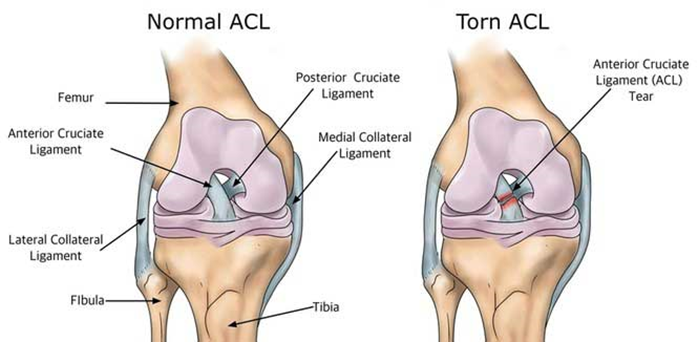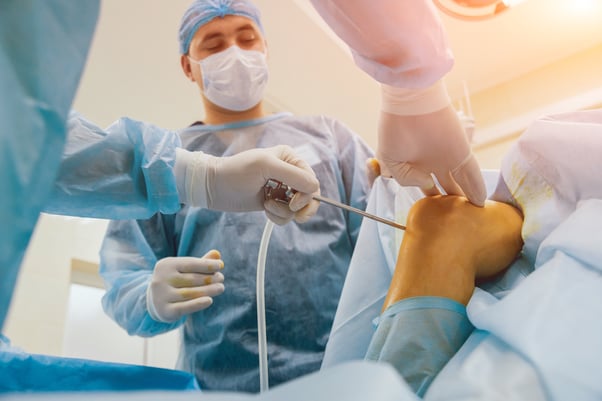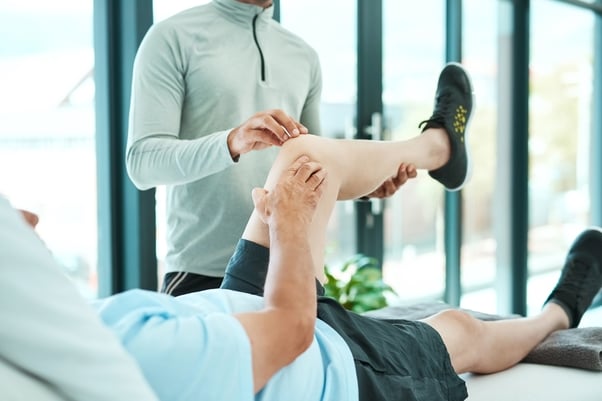How Long Does ACL Surgery Take?
Introduction
Am ACL Surgery is short for anterior cruciate ligament surgery. This is a surgery that is done to replace the anterior cruciate ligament, a ligament that connects the femur and tibia while passing through the middle of the knee. This ligament stabilizes the knee.
It is very common in people who routinely perform certain movements such as:
- Slowing down and changing direction suddenly
- Changing direction with your foot firmly planted on the ground
- Incorrectly landing from a jump. This means collapsing at the knees upon landing
- It is also common in people who have experienced direct trauma to the knee.
People who perform these movements are mostly athletes and fitness enthusiasts. A lot of ACL patients are sports players.
Indications for ACL Surgery
An ACL surgery is indicated in people who gave a torn anterior cruciate ligament and sometimes other related knee injuries. But not all people with a torn anterior cruciate ligament will have to undergo this surgical procedure. Some people will heal with physical therapy and the use of a knee brace. As in many other procedures, there are certain conditions to be met by the patient to be considered eligible to undergo ACL reconstruction surgery.
Some of these conditions include:
- The patient is an adult actively involved in sports or other exercises
- The patient is a child with completely fused growth plates.
- More than one ligament is injured
- The patient has a torn meniscus
- The patient experiences symptoms of knee instability including knee pain and a knee that gives way during normal daily activities.
- Physical therapy and rehabilitation have proved ineffective.
An ACL surgery may not be the best option for patients who fall into the following categories:
- A child with open growth plates
- The patient's ACL is only partially torn
- The patient has a severe illness or infection

Normal & Torn Anterior Cruciate Ligament (ACL)
Before the ACL Surgery
For the patient to get optimum results from the surgery, they will need to undergo several weeks of physical therapy. This is important to reduce stiffness, swelling, and pain. Physical therapy helps to restore the patient's full range of motion in the knee and strengthen the muscles around it.
Ignoring this step would mean that the patient would not be able to regain the full range of motion after the surgery is done.
What does ACL Surgery Entail?
An ACL reconstruction surgery is carried out in three steps namely:
- Arthroscopy
- Graft harvesting
- ACL Reconstruction
Arthroscopy
First, the surgeon makes a small incision in the knee through which they can use a small device with a camera to take a look at the ligament. They want to make sure what they can see is the same as the findings on the patient's preliminary tests.
The arthroscopy will also help them discover any other associated injuries if any. What they see also helps them reconfirm the kind of graft they will have to do for the reconstruction.
Graft Harvesting
Most people have an autograft, where a part of a tendon from their own body is used to replace the torn anterior cruciate ligament. The most common sites for this graft are:
- Knee cap
- Anterior Thigh
- Hamstrings
The surgeon will take a part of the tendon at any of these areas to repair the anterior cruciate ligament.

Orthopaedic Surgeon Performs ACL operation
ACL Reconstruction
After obtaining the graft tissue, the surgeon will take a look at the remnant of the torn ACL to see what parts are attached to the femur and tibia. Then he will mark the points of attachment for the graft on the femur and tibia and drill matching size holes there. The next step will be to make a fastening suture at the hole on the tibia and then on the femur to help with pulling the graft tissue through. Then the surgeon will attach the graft tissue to the femur and fix it there with a fastening device. He will hold the other end of the graft while bending and straightening the knee repeatedly. This repeated motion helps to reduce the tendency of the graft slipping out of place. After that, the graft will be pulled taut and attached to the tibia with a fastening device while bending the knee at 20 degrees. The knee has to be bent because it is at this position that the ACL is most taut naturally. And then finally the surgeon will take a look at the knee again using arthroscopy to make sure the goal of the surgery has been achieved.
Type of Anaesthesia
ACL surgery requires the patient to undergo general anaesthesia, which means that they will be unconscious while the surgery is going on. This is done so the patient is not aware of the procedure while it is being done.
How Long Does ACL Surgery Take?
It might not seem like it, but an ACL reconstruction surgery takes roughly 2 hours to complete. It is a day case surgery which means the patient will be going home the same day.
It might take a bit longer if the surgeon discovers additional injuries in the knee.
ACL Surgery Recovery
ACL surgery recovery starts immediately. The patient will be going home on the same day with crutches. They may have to wear the crutches for up to 2 weeks.
They will also need to wear knee braces or a splint. They may need to have this on for a month or longer.
The doctor will give the patient a list of specific instructions to follow and drugs to take. The patient will also be required to continue physical therapy to get the most out of the treatment.
The patient should be able to start walking and other light activities within a month or two.
Specific timelines for these milestones may vary slightly. The patient needs to keep up with follow-up appointments so the doctor can confirm when it is alright to do certain things.
The doctor may advise the patient to use cold therapy to reduce swelling and pain as well.
As recovery progresses, more intense physical therapy and exercises to strengthen the muscles around the knee and improve flexibility will be required. The patient will have to learn exercises that can be done at home and others that need supervision. Adhering to the management plan is very important to achieve the best possible outcomes.

Example of exercise for ACL recovery
How Long Does ACL Surgery Recovery Take?
Complete ACL recovery could take as long as 12 months, especially for athletes. But on average, most people should have regained full use of their knee after nine months.
To increase the speed of recovery it’s recommended to combine supporting medication and regular exercises under the guidance of a physiotherapist.
To be on the safe side, it’s recommended to avoid activities that can put the knee at the risk of the new injury at least until the full recovery is confirmed by your orthopaedic surgeon.
Conclusion
The most important thing for a patient to note in the journey of recovery is to follow the doctor's advice to the letter. They should keep up with all follow-up appointments.
Full recovery from an anterior cruciate ligament reconstruction surgery is possible. It requires synergy between the doctor and the patient.
Contact Orion Orthopaedic Clinic
Dr. Mizan Marican is a highly trained orthopaedic surgeon. He has over 10 years of orthopaedic experience, with a specialization in conditions related to hip pain and knee pain including osteoporosis and arthritis.
His areas of expertise include joint preservation, sports and trauma injuries, degenerative conditions of the hip and knee, and joint replacement surgeries. He takes a patient-first approach and provides personalized treatments based on your lifestyle needs and preferences. He places first priority on non-surgical alternatives to rehabilitate pain-free mobility before considering other surgical approaches. Contact him now for a consultation.
Is it alright to walk around with a sprained ankle?
This depends on the sprain's severity and what treatment has been rendered for the injury. Your doctor may advise you to only put minimal weight on your ankle while it is still recovering from the injury. Excessive walking may lead to more pain and swelling if the injury is stressed too early on.
How do I know if my ankle sprain is serious?
The nature of the initial accident or injury will provide a good idea about how fast it may recover. A serious injury is characterized by severe pain, swelling, and recurrent sprains despite efforts to support and treat it. If you are experiencing these, the soonest visit to the specialist is highly advised.
Can I claim insurance for my ankle injury?
Ankle sprains and injuries are insurance claimable. We do advise our patients to check with their personal or corporate insurance plans and representatives. We are also able to help them with this if required.
What should I do immediately after an ankle sprain while waiting for my appointment and treatment?
Timely self-care with rest, icing, compression, and elevation are important to manage the initial pain and swelling around the ankle. Anti-inflammatory medication will further reduce the pain and swelling that you may be experiencing.
I have more questions, how can I speak to a doctor?
Please call us at +65 6733 4565 (during office hours), or drop us a text or WhatsApp message at +65 9766 4565. We will reply to your queries as soon as we get them. You may also call to make an appointment to see Dr. Mizan for your ankle injury.